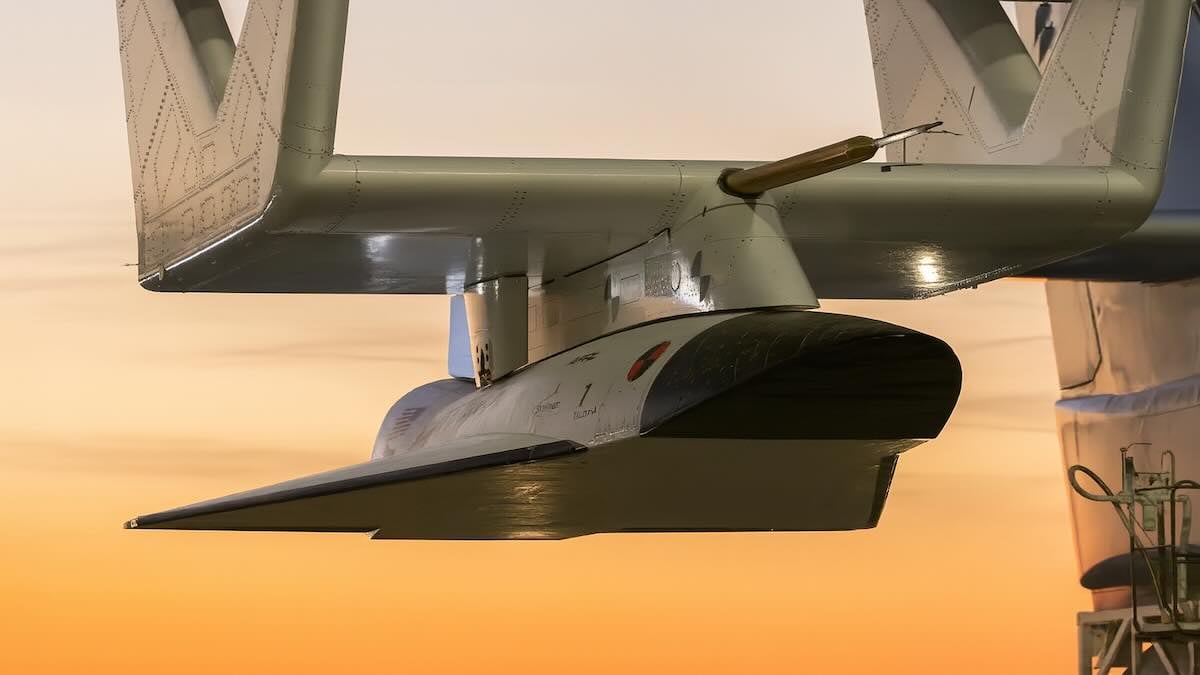The sound of progress changes when speed bends the rules of flight. A record carrier lifts a sleek craft, then physics takes the lead past 3,728 mph. The moment signals a new rhythm for U.S. aviation, where daring meets discipline. In this story, the airplane becomes both platform and promise, carrying a test vehicle higher, then letting it run free. Engineers watch, instruments sing, and the sky yields new data.
Inside the behemoth airplane that lifts hypersonic vehicles
A dual-fuselage giant sets the stage. Its wingspan stretches past 385 feet, wider than a football field. Six engines, adapted from 747 liners, deliver reliable thrust with proven systems. The airframe uses a central wing to link two hulls, which stabilizes loads and simplifies mounting. Designers favor composites and rugged systems, because launch operations need strength with range and flexibility.
The carrier climbs above weather to over 30,000 feet, where thin air helps. From that altitude, release happens cleanly, and the test vehicle gets a calm start. Teams tune weight, balance, and separation timings, while telemetry confirms margins. The craft then lights its propulsion, and the profile moves from glide to sustained acceleration. Ground crews track every second, because tiny changes alter heat and loads.
Purpose guides the design choices. Air-launch reduces reliance on fixed pads and crowded ranges, so costs drop and cadence rises. Satellite testbeds ride more often, while sensitive payloads avoid delays. The platform also serves research because it reconfigures quickly. In this setup, the airplane is a runway in the sky, and that runway meets the test window wherever weather allows.
How this airplane test turns speed into workable capability
Hypersonic flight demands toughness where air behaves like a fluid and a flame. Friction heats surfaces, so materials protect edges and inlets. Engineers add sensors under the skin, while structures carry shock and vibration. Guidance software trims control surfaces in small steps, because errors grow fast with Mach. Every gram matters, yet reliability comes first during climb and burn.
Power comes from specialized engines and staged propulsion. A booster gets the vehicle moving, then advanced cycles keep thrust while air slams in. In that regime, airflow must stay stable through the intake and combustor. Designers shape the nose and body to tame shock waves, so lift remains useful and drag stays manageable. The goal is sustained speed, not just a spike on a graph.
Numbers anchor the achievement. Instruments recorded more than 3,728 mph, a marker above many storied records. The test proved feasibility, while expansion points to repeatable performance. Because the profile stitched together climb, separation, and burn, the team validated multiple steps at once. For the public, the headline soared. For the program, the data mattered more than applause. The airplane turned ambition into measured results.
From breakthrough to impact: use cases, risks, and best practices
Applications reach across defense, science, and commerce, while safety stays central. Rapid test loops shorten timelines, so prototypes evolve faster. Researchers imagine high-altitude labs, quick sample returns, and sensor trials. Operators see responsive launch options that meet windows on demand. Insurance and standards will adapt, because new profiles require new checklists, audits, and training.
Risk lives in heat, control, and integration. Thermal loads grow with speed, so coatings and joints need margin. Control laws must handle gusts and slight misalignments after release. Integration challenges include pylons, fairings, and quick refits between missions. Programs manage risk through incremental envelopes, so each flight adds range without gambling the craft. Clear “go/no-go” rules keep discipline inside excitement.
Public response tracked the pace of news. Coverage spanned broadcast clips, industry outlets, and live updates. Enthusiasm rose, while questions focused on cost, timelines, and access. Specialists credited the teams of engineers, scientists, and flight crews who made it work. A designated test facility handled operations with strict procedures. The airplane enabled a flexible, mobile launch site that met schedule pressure.
Why this airplane moment signals a wider shift
Context matters because aviation remembers cycles. After long focus on efficiency and range, speed returns with purpose. The carrier-plus-vehicle model blends aerospace with space access, where air-launch meets agile manufacturing. Programs can test often, learn quickly, and scale what works. That loop strengthens supply chains, jobs, and training, so capability compounds with each flight.
Comparisons clarify the advance. Many fast jets have touched high Mach, yet few sustain controlled hypersonic regimes for test goals. Here, altitude staging and precision separation raised odds of success. The setup kept the runway mobile while weather and airspace stayed manageable. Thanks to proven engines on the carrier, lifecycle costs remain predictable between upgrades and refits. On this plan, speed travels with discipline.
Timelines become real through data. The vehicle hit targets above 3,728 mph, and profiles matched pre-flight models. Analysts note that repeatability turns records into tools. With each sortie, teams refine airflow, materials, and guidance. Because the airplane can reposition, campaigns avoid bottlenecks and keep pace with windows, so the learning curve tilts in the program’s favor.
A forward path that rewards bold teams and careful choices
America’s return to fast flight feels new, yet it rests on careful groundwork. The carrier’s scale supports frequent tests, while the hypersonic craft proves its design step by step. Media attention helps, although sustained progress depends on budgets, data, and safety. As teams refine procedures and parts, reliability grows and costs ease. In that rhythm, the airplane remains the quiet hero that makes speed practical.
